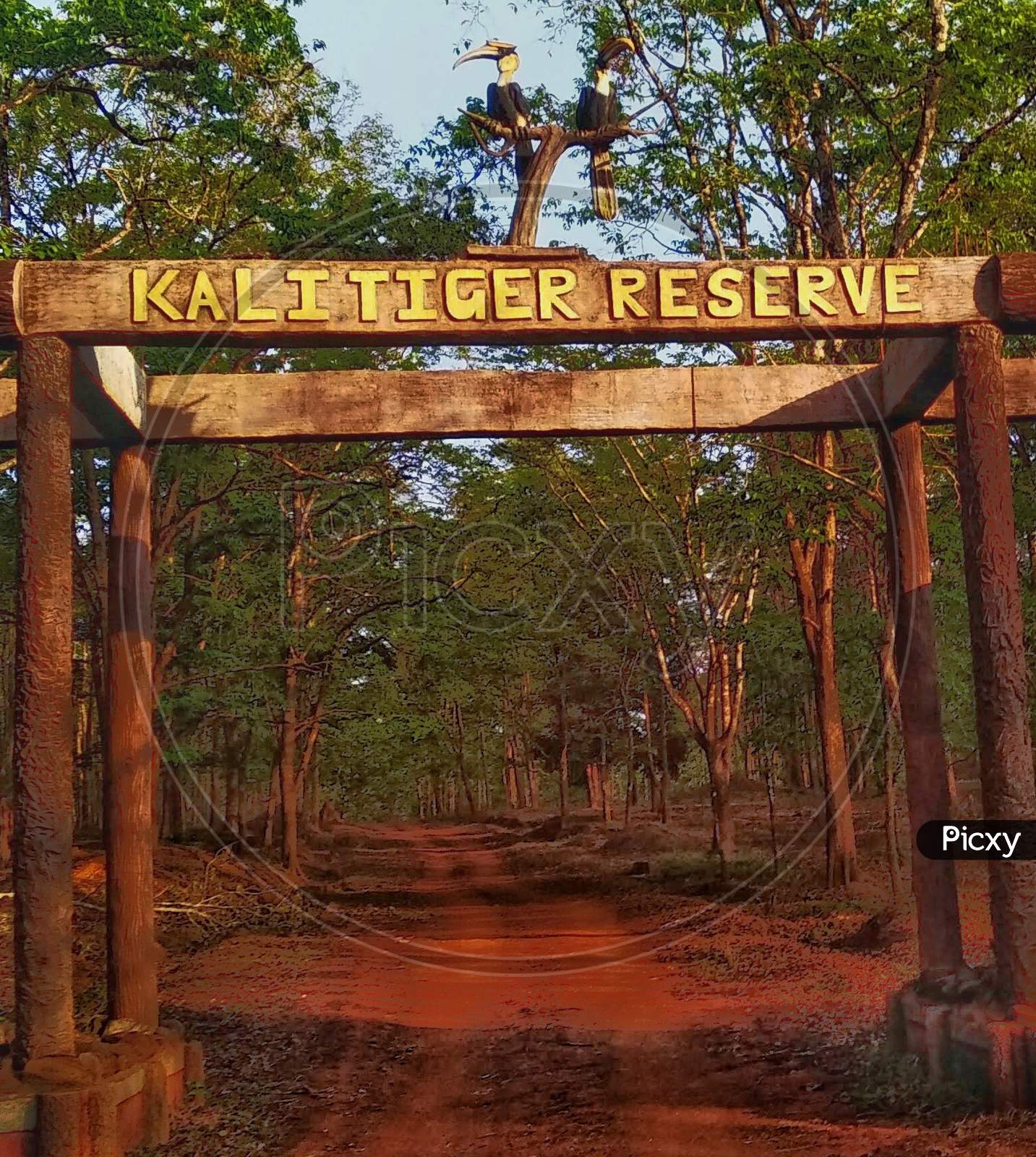KALI TIGER RESERVE FOREST// SSC// GK
Location
Kali Tiger Reserve is located in Uttara Kannada District of Karnataka State. It covers the taluks of Haliyal, Karwar and Joida, the Kali Tiger Reserve (KTR) is part of the Uttara Kannada district of Karnataka. It lies between latitudes 14° 57’ 23.04” N; longitudes 74° 15’ 7.56” East and latitude 15° 9’ 56.16” North; longitude 74° 43’ 10.56” East.
Place
The Tiger Reserve comprises of two important protected areas of the region i.e Dandeli Wildlife Sanctuary and Anshi National Park. Dandeli Wildlife Sanctuary covers 475.018 sq km and Anshi National Park covers 339.866 sq km. both are contiguous to each other and form a single tract of protected area located in biologically sensitive Western Ghats.
History
The forest in the area was declared the Dandeli Wildlife Sanctuary on 10 May 1956. The state proposed carving out a section of the sanctuary to form the Anshi national park, which was implemented on 2 September 1987.The initial proposal covered 250 square kilometres. When the final notification of the park area was issued in 2002, it was extended by another 90 square kilometres. It was renamed to Kali Tiger Reserve in December 2015. The park is home to several hydroelectric dams and a nuclear power station.These two protected areas were administratively unified under Dandeli-Anshi Tiger Reserve (DATR) in the year 2007
Flora
The park is in the ecoregions of North Western Ghats montane rain forests and North Western Ghats moist deciduous forests, both of which are deemed endangered by the World Wide Fund for Nature (WWF). The forests have high biodiversity.Some common trees and plants here include: bintangur, Calophyllum wightianum, Malabar tamarind, Garcinia morella, Knema attenuata, Hopea wightiana, Tetrameles nudiflora, blackboard tree, Flacourtia montana, Machilus macrantha, Carallia brachiata, aini-maram, Artocarpus lacucha, true cinnamon, bamboo, bauhinia, eucalyptus, lantana, silver oak, teak and jamba
Fauna
The black panther, elephants and tigers live in the park but are rarely seen. Other large mammals here are Indian bison, sloth bear, Indian wild boar, bonnet macaque, northern plains grey langur, grey slender loris, several deer including: barking deer (muntjac), mouse deer (chevrotain), sambar deer and spotted deer (chital or axis deer).
Wild dog, jackal, jungle cat, leopard cat, small Indian civet, Indian grey mongoose, flying squirrel, porcupine, Malabar civet, Indian giant squirrel and pangolin also make their home in the forests here.
Reptiles in the park include the king cobra, spectacled cobra, Russell's viper, saw-scaled viper, common krait, Indian rock python, rat snake, vine snake, green or bamboo pit viper and monitor lizards.
Interesting birds include the Ceylon frogmouth, great hornbill, Malabar pied hornbill, Malabar grey hornbill, Indian grey hornbill and Asian fairy bluebird. Around 200 species of birds are recorded in the park. These include the distinctive adjutant stork, ashy woodswallow, black-crested bulbul, blue-headed pitta, brahminy kite, broad-billed roller, crested serpent eagle, great hornbill, golden-backed woodpecker, Malabar pied hornbill, Sri Lanka frogmouth and yellow-footed green pigeon
HIGHLIGHTED POINT - KALI TIGER RESERVE FOREST
The Kali has 92.45% forest cover and four tigers, according to new report
This Kali tiger reserve is in the fourth place, following Pakke in Arunachal Pradesh with 96.83% forest cover, Achanakmar in Chhattisgarh with 95.63% and Simlipal in Odisha with 94.17% forest cover. Dampa in Mizoram with 92.05% cover is in the fifth place.
However, between 2011 and 2021 shows that Kali has lost forest cover by 13.14 sqkm.
The forest area in 2011 was 1,318.36 sqkm and in the 2021 report it has come down to 1,305.22 sqkm. The total area of the tiger reserve is 1,411.75 sqkm. The forest cover in Bandipur, Bhadra, Nagarahole and B M Hills tiger reserves are 53.53%, 74.45%. 75.43% and 86.21%, respectively.
Bhadra has lost forest cover by 53.05 sqkm, while Bandipur has lost 7.39 sqkm. B M Hills has gained forest cover by 16.77 sqkm and Nagarahole has lost 42.38 sqkm.
The Kali has 273.74 sqkm of very dense forest, 962.33 sqkm of moderately dense forest and 69.15 sqkm of open forest. It should be noted that the tiger corridor of the Anshi-Dandeli-Sharavathi valley is one of thickest corridors in terms of forest cover. The total forest cover in the corridor is 93.67% across 405.44 sqkm, among the top three among forest corridors across the country.
The highest number of tigers in the state are in Nagarahole which has 127 of the big cats, followed by Bandipur at 126. A conservationist said that although the data showed four tigers in Kali in 2018, currently the population has jumped to at least 15. Rahul Bavaji, a conservationist said the decrease in forest cover is unfortunate. He said the forest department must ensure protection of grasslands in the woods which will help the tiger population.
SOURCE- WIKIPEDIA, KARNATAKA TOURISM, KALI TIGER RESERVE FOREST












0 Comments